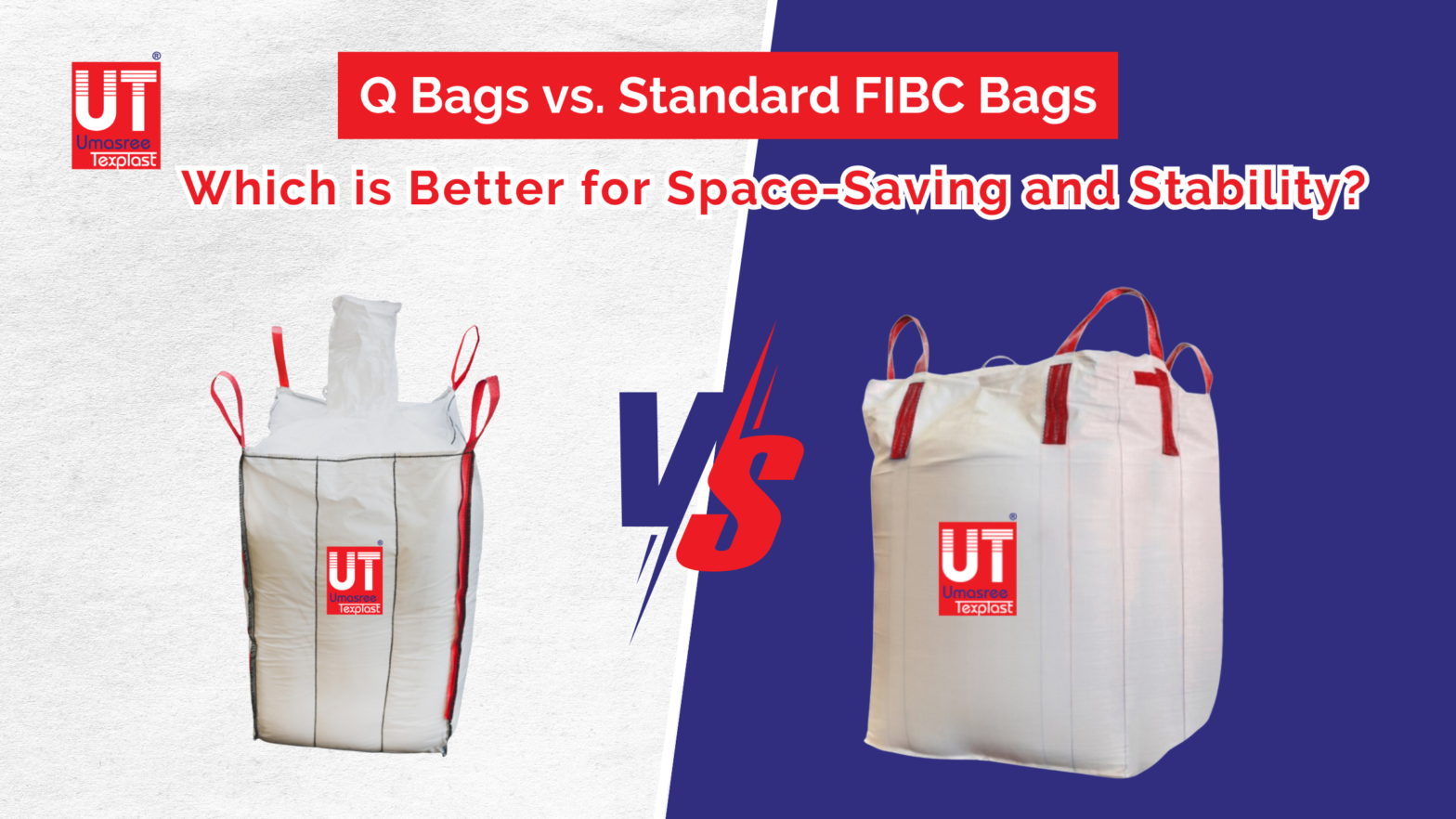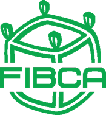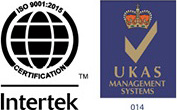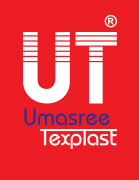Q Bags vs. Standard FIBC Bags: Which is Better for Space-Saving and Stability?

In the world of bulk packaging, FIBC bags (Flexible Intermediate Bulk Containers) have become the go-to solution across industries like agriculture, food, construction, and chemicals. These large, durable bags are designed to store and transport materials efficiently, offering businesses a cost-effective and eco-friendly packaging choice.
Among the many variations of FIBC bags available, two commonly compared types are Q Bags (also called Baffle Bags) and Standard FIBC Bags. While both serve the purpose of storing and transporting large volumes of materials, they differ significantly in design, performance, and use cases.
In this blog, we’ll explore the unique features of Q Bags vs. Standard FIBC Bags, comparing their benefits, limitations, and ideal applications—so you can decide which one best suits your packaging needs.
What are Standard FIBC Bags?
Standard FIBC bags, also known as big bags, bulk bags, or jumbo bags, are simple yet robust containers made from woven polypropylene fabric. They typically come in four-panel, U-panel, or tubular designs, with a load capacity ranging from 500 kg to 2000 kg.
They are widely used for packing materials like grains, seeds, sand, fertilizers, chemicals, minerals, and more. Its greatest benefits are its accessibility, affordability, and adaptability.
Key Features of Standard FIBC Bags:
- Load-bearing capacity: 500–2000 kg
- Made from woven polypropylene fabric
- Available in multiple designs (4-panel, U-panel, tubular)
- Reusable and recyclable
- Suitable for both hazardous and non-hazardous materials
What are Q Bags (Baffle FIBC Bags)?
Q Bags, also known as Baffle FIBC Bags, are an advanced type of FIBC bag designed with internal baffles. These baffles are stitched into the corners of the bag to help it retain a cubic shape when filled. Unlike standard FIBCs, which bulge outward, Q Bags stay upright and stable.
This design allows Q Bags to maximize space efficiency during storage and transportation, particularly in shipping containers, warehouses, and pallets.
Key Features of Q Bags:
- Internal baffles for shape retention
- Higher stackability and space efficiency
- Reduced bulging compared to standard FIBCs
- Load capacity similar to standard FIBCs (500–2000 kg)
- Ideal for industries prioritizing space-saving and stability
Comparing Q Bags vs. Standard FIBC Bags
Now that we’ve defined both types, let’s dive into a detailed comparison of Q Bags and Standard FIBC Bags across different factors.
1. Design and Shape Retention
- Standard FIBC Bags: Tend to bulge outward when filled, reducing stackability. The shape can be irregular, depending on the material inside.
- Q Bags: Stay square or rectangular when filled, thanks to internal baffles. They are far more stable and make the best use of available space.
2. Space-Saving Efficiency
- Standard FIBCs: Leave gaps when stacked or placed in containers, which can result in unused storage space.
- Q Bags: Fit neatly next to each other without gaps, ensuring maximum use of warehouse and shipping container space. Studies show that Q Bags can improve container space utilization by up to 25–30%.
3. Loading and Transportation
- Standard FIBC Bags: Easier to manufacture and handle, and they can be lifted with forklifts, cranes, or hooks. They perform well in most industries for short to medium-distance transportation.
- Q Bags: Offer extra stability during transportation, reducing the risk of tipping over. This is especially useful for long-distance freight transportation by train, truck, or ship.
4. Cost-Effectiveness
- Standard FIBC Bags: More affordable than Q Bags due to simpler design and manufacturing process. Standard bags continue to be a sensible option for businesses searching for inexpensive bulk packaging.
- Q Bags: Slightly more expensive because of the added complexity of internal baffles, but the cost can be offset by savings in shipping and storage efficiency.
5. Applications Across Industries
Standard FIBC Bags:
- Agriculture: Seeds, grains, fertilizers
- Construction: Sand, gravel, cement
- Chemicals: Powders, resins, granules
- General bulk material handling
Q Bags:
- Food industry: Sugar, flour, starch, milk powder
- Chemicals: Fine powders needing stable transportation
- Logistics: Shipping in containers where space-saving is critical
6. Durability and Reusability
- Standard FIBC Bags: Strong and reusable, but may lose shape after several uses.
- Q Bags: Offer similar durability, but their baffle stitching provides added stability, ensuring they hold shape better over multiple uses.
Which One Should You Choose?
The choice between Q Bags vs. Standard FIBC Bags ultimately depends on your packaging priorities:
Choose Standard FIBC Bags if:
- You need a cost-effective solution.
- Your focus is on general material handling.
- You don’t require precise space utilization in storage or shipping.
Choose Q Bags if:
- Space-saving and stability are top priorities.
- You ship goods in containers where maximizing every inch counts.
- You want neat stacking and reduced bulging during storage.
In many cases, businesses use both types side by side, depending on their product, storage, and shipping requirements.
Final Comparison Between Q Bags vs. Standard FIBC Bags
| Feature | Standard FIBC Bags | Q Bags (Baffle Bags) |
| Shape Retention | Bulges when filled | Retains cubic shape |
| Space Efficiency | Moderate | High (up to 30% more) |
| Cost | Lower | Slightly higher |
| Stability in Transit | Good | Excellent |
| Applications | General bulk packaging | Container shipping, food & chemicals |
| Stackability | Limited | Excellent |
Conclusion
Both Q Bags and Standard FIBC Bags play an important role in modern bulk packaging. While Standard FIBCs are versatile, affordable, and reliable for general applications, Q Bags stand out for their ability to save space, enhance stability, and improve shipping efficiency.
The decision comes down to your priorities—whether it’s cost-effectiveness or maximizing storage and transport space. By understanding the strengths of each, businesses can create a hybrid packaging strategy that optimizes costs, stability, and efficiency.
At Umasree Texplast, we specialize in manufacturing high-quality Q Bags and Standard FIBC Bags designed to meet global packaging standards. Whether you’re focused on affordability or maximizing efficiency, our team provides customized solutions to match your exact industry needs.
Contact Umasree Texplast today to discover how our bulk packaging expertise can add stability and efficiency to your supply chain.





